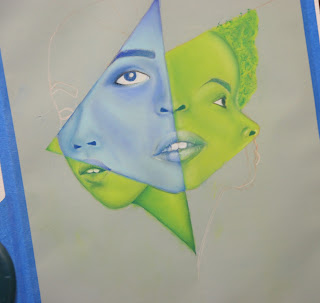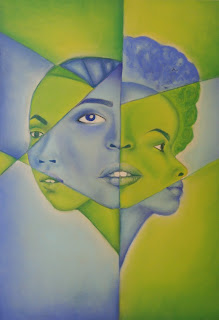Advanced Drawing and Painting
We will be looking at works of art by Pablo Picasso in the next couple of weeks. I first fell in love with the work of Picasso when I was in Barcelona and visited the Picasso Museum. Up until then I hadn't realized that as a teenager he was painting stunning realistic oil paintings, rendering fabric like Da Vinci. I always thought of Cubism when I thought of Picasso, not realism. My limited exposure to Picasso didn't make me feel like he was an artist that I needed to discover more about...was I wrong. His work was constantly evolving...his critics and the world loved him for that.
At the age of 76 Picasso said, "Everything I have done is just the first step on a long path. It is only a preliminary process, which must be developed much later on. My works must therefore be considered each in relation to the others, always taking into account what I have done and what I am going to do."
Tuesday, February 24, 2015
Picasso Inspired Portrait
Now that we have studied the art work created by Picasso in class and discussed the amazing evolution of his art, it is time to create a work of art based on the portraits he painted during and after the birth of cubism. Your portrait should somehow combine 3 views of a face. How do you do this? Work it out in your sketchbook. Overlap different views of a face you have already drawn or someone you want to draw. Combine the faces by connecting them with lines, omitting some features, emphasizing others...experiment.
Picasso painted hundreds and hundreds of original creative portraits of people. Some were realistic, expressionistic, cubist...etc. Even though you are using Picasso as inspiration your portrait will be an original because you will put your twist on it.
Color: Choose an analogous or monochromatic color scheme for the portrait then decide if you want the background to stay within that color scheme or clash with it.
Movement: Create movement within the piece by placing like colors in different areas of the artwork or by drawing lines that connect the faces or areas of the artwork.
Emphasis: Where is the focal Point? Is there an place that you want the viewer to go to in your piece? How can you lead them there? Maybe with color or placement of shapes and lines.
Balance: When deciding your composition weight the areas evenly. Notice below how negative and positive space are balanced.
 |
| By Jane B, 2012 |


 |
| Clare H, 2012 |
 |
| Clare H, 2012 |
 |
| Brooke D, 2011 |
 |
| Josephine F, 2011 |
 |
| Picasso's sketches of James Sabartes. |
 |
| Final painting, notice the references to the details in the sketch. |
 |
| In this painting Picasso is starting to combine views of features. |
Subscribe to:
Comments (Atom)

